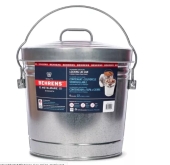Lorinne Anderson wrote:Ah, I reside in Canada; it is illegal to be in possession of native wildlife here, let alone "breed them", hence my curiosity. I did not know Fishers lived outside of North America, my ignorance is showing!
Ah that's actually not quite accurate, there are permits and licenses for just about everything. For example hunting and trapping licenses lets people be in possesion of many game animals including fishers.
In terms of fishers. We have lots of mink farms which are very similar in every way. There are fisher breeding and reintroduction programs in Ontrario as well. So if someone wanted to help develop a less flighty more pettable form of fisher that can succeed in extripated areas that may be viable.
We also have deer farms, poultry farms. People raise northern bobwhite quail, grouse, turkeys, etc.
Yeah some endangered animals like northern bobwhite you can not catch in the wild and need a permit for relocation efforts.
But lots of people livetrap and relocate regular animals all the time, such as "pest relocation". And there are domesticated varieties of northern bobwhites for instance that you can breed without any permit.
Similarly for certain dangerous animals like deer you need a permit as well. But yeah where there is a will there is a way.
If in doubt you can contact your local conservation authority for how to move forward. Though the goals of permaculture and conservation authorities is pretty much the same, to help have habitat and a diversity of wild animals.
Fishers are native to all of ontario so getting help with returning them to areas where they have been extripated should be fairly straightforward.
Here I found some ontario legislation for you:
https://www.ontario.ca/page/harass-capture-or-kill-wild-animal-damaging-private-property
The easiest way to get some target wild animal like weasel or opossum is to call some wildlife removal services and tell them which animals you are interested in receiving, they are always looking for places they can put pest animals.
The next easiest possiblity is to get a trapping license or setup your own pest removal service. For breeding them in captivity you would need a license. But for breeding them outdoors by providing them with nesting boxes and food you do not.
Can make sure with your municipal bylaws, as some cities don't allow feeding mamals, but in rural areas shouldn't be a problem.








